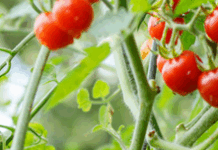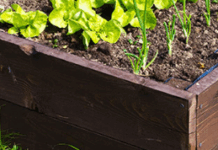The bagworm problem is huge this summer! They go after numerous tree and shrub species but especially junipers and arborvitae. I have received about as many calls of bagworm on deciduous trees and shrubs this year as junipers. If you are having problems your time for control is running out.
Young bagworms normally hatch in May in Kansas and initially are about 1/25 of an inch long. The young larvae begin to spin silken bags around themselves which they carry as they feed. Larvae usually feed on the original plant or those nearby but very young larvae may be transported to other hosts via a long silken thread that can be carried by the wind. As the larvae grow, leaf fragments are added to the bag providing a natural camouflage. The visual appearance of the bag varies depending on the type of foliage attached to the bag.
Often the bags are not noticed until the larvae are nearing maturation and the bags approach 1 to 2 inches in length. Mature bags hang off the tree or shrub like Christmas ornaments. Bagworms reach maturity in August. The now mature larvae attach their bags to branches or other objects and change into adults. The adult male is a small, gray, clear-winged moth that resembles a wasp.
The female is wingless and legless and never leaves the bag. Males emerge in September and mate with the female through the bag entrance. The female then produces her eggs and dies. Eggs overwinter inside the bag and the cycle repeats the following year.
What can you do for control? Small infestations can be picked off by hand once the larvae are large enough to see easily. However, any insecticide spray will be more effective if used on young larvae that are actively feeding. In Kansas, start looking for the new hatch about the middle of May. Wait several weeks after seeing the first larvae emerge to allow those still in the bag to make their appearance. This normally means spraying during the latter half of June in Kansas.
Insecticides commonly used for controlling bagworms include spinosad (Conserve; Natural Guard Spinosad; Captain Jack’s Dead Bug Brew, Monterey Garden Insect Spray), acephate (Acephate, Orthene, Bonide Systemic Insect Control), cyfluthrin (Tempo, BioAdvanced Vegetable & Garden Insect Spray) and permethrin (Eight Vegetable, Fruit & Flower Concentrate; Hi-Yield Garden and Farm Insect Spray; HiYield 38 Plus Turf, Termite & Ornamental Insect Spray). Also, products containing Bacillus thuringiensis are effective when used against bagworm larvae while they are still small. Products containing Bacillus thuringiensis and spinosad are organic controls. THOROUGH SPRAY COVERAGE TO FOLIAGE IS ESSENTIAL FOR CONTROLLING BAGWORM! Controls applied in August are often a waste of time and expense because the larvae are large, tough and may have stopped feeding.




